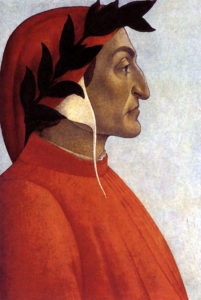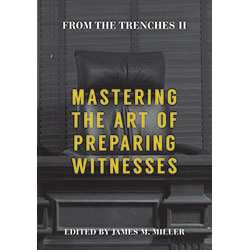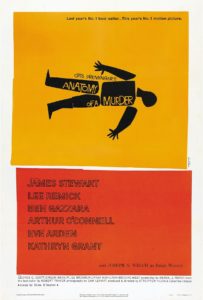Dante’s Guide: Preparing the Grand Jury Witness
Reading Time: 3 minutes.

(c. 1265–c. 1321)
Finally, one gets to quote Dante while talking about grand jury witnesses:
In the year 1300, at age 35, the narrator of Dante’s Inferno famously finds himself in trouble:
Midway in our life’s journey, I went astray
from the straight road and woke to find myself
alone in a dark wood. How shall I say
what wood that was! I never saw so drear,
so rank, so arduous a wilderness!
Its very memory gives a shape to fear.
The grand jury witness finds himself or herself in a position not unlike that of the Italian poet at the beginning of his trek through the Divine Comedy. The federal grand jury is one of the most powerful, secret and peculiar institutions in American law and culture. It is certainly the most one-sided and the one that most lay persons find runs counter to their civics-class understanding of American governance.
In the poem, Dante has a guide through hell: the Roman poet Virgil. When Dante asks to be saved from the first of three beasts with which he is confronted, Virgil does not spare Dante’s sensibilities:
And he replied, seeing my soul in tears
“He must go by another way who would escape
this wilderness, for that mad beast that fleers
before you there, suffers no man to pass.
She tracks down all, kills all, and knows no glut,
but, feeding, she grows hungrier than she was.”
As lawyers for grand jury witnesses, we must do as Virgil does, and first off remind our client that, like the She-Wolf, the grand jury “tracks down all, kills all, and knows no glut.”
Plus, “fleers” is a great word.

All this from a chapter I wrote — Dante’s Guide: Preparing the Grand Jury Witness — in a book just published by the ABA.
From the ABA Bookstore blurb:
The witness is the star of any trial. All other evidence—exhibits, demonstrative evidence, the facts—come to life through the witness. In every successful trial there was at least one witness who told a story, held the jury’s attention, withstood cross-examination, and helped win a verdict. In every loss there is usually a witness who crashes and burns. How do you explain the difference?
Preparation.
For all but the experienced expert witness, testifying is an alien experience and the courtroom is a strange and forbidding place. The witness needs help, and it’s the lawyer’s job to provide it. The authors of this book have prepared, examined, and cross-examined thousands of witnesses over the course of their successful careers as trial lawyers. They have seen first-hand what works and what does not—on the witness stand and in pre-trial preparation and practice sessions. Their hard-won lessons, lessons learned in the trenches of trial practice, are contained here.
This is the second in a series of books published by the ABA under the title “From the Trenches.” This second volume, “Mastering the Art of Witness Preparation,” contains 12 chapters covering all aspects of witness preparation. Whether you are a first-time, second-chair associate or a veteran first-chair partner preparing for your 100th jury trial, this book will provide guidance, thoughtful insights, and unique perspectives on preparing your witness to testify.
Here’s where you can get the book: Mastering the Art of Preparing Witnesses
(The book has some outstanding trial lawyers as contributors, including Jim Miller, Mike O’Donnell, Scott O’Connell, Jessie Zeigler, Sawnie McEntire, and Jerry Glas.)
We have addressed grand jury matters before here
and here

It’s not grand jury witness prep, but here’s the first few minutes of Anatomy of A Murder:
Plus, Duke Ellington did the score:
